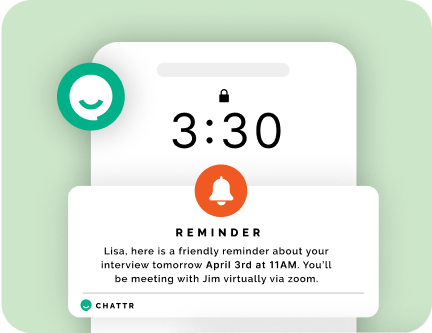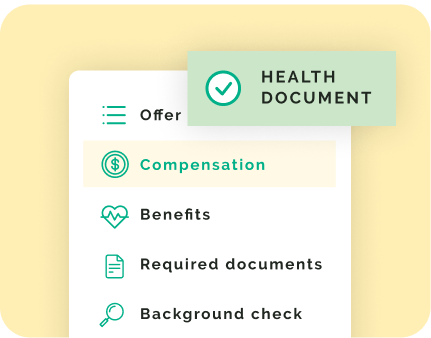Hiring is the backbone of any successful organization. Attracting, recruiting, and retaining the best talent is crucial for success, especially in today’s competitive job market. A strong talent acquisition strategy is the key to finding and hiring the right people who can significantly impact a company’s bottom line. Organizations with efficient hiring practices experience lower turnover rates and increased productivity.
Identify Your Needs
The first step in launching an effective talent acquisition strategy is to identify your hiring needs. You need to define the roles you need to fill and understand the qualification and skill requirements for each role. It’s crucial to identify the number of hires needed, so you can allocate appropriate resources for the recruitment process.
Defining your hiring needs helps you determine the scope and scale of your recruitment efforts. This information also guides you in creating an adequate job description that accurately reflects the position’s requirements.
Write Accurate Job Descriptions
Creating accurate job descriptions is one of the most important steps in any successful talent acquisition strategy. Job descriptions must capture the role’s requirements, duties, and expectations. Using the right vocabulary and language that speaks to potential candidates will help attract the right talent. Employers should also highlight specific skills required for the job to ensure potential candidates have the necessary requirements.
Build Your Employer Brand
Your employer brand is your organization’s identity as an employer. It helps attract and retain the right talent by showcasing your company’s culture and values. Building an authentic and attractive employer brand is crucial for successful talent acquisition.
First, define your company culture and values to create a strong employer brand. Then, showcase them through various channels, such as social media, career pages, and employee testimonials. Be honest, transparent, and consistent in your messaging, and strive to create a compelling employer brand that resonates with your target audience.
Social media is an invaluable tool for promoting your employer’s brand. It enables you to engage with candidates, communicate your brand message, and showcase your company culture. You can use social media platforms like LinkedIn, Twitter, and Facebook to provide insights into your workplace and showcase your employer brand.
Source Candidates
Sourcing candidates has become a herculean task in the current job market, with high competition for skilled and experienced workers. That is why utilizing multiple sourcing channels, including job boards, social media, referrals, and professional networks is essential. These multiple channels provide a more extensive pool of candidates, increasing the chances of finding the perfect fit for the job.
Moreover, personalizing the outreach to candidates increases the chances of attracting top talents to a company, as candidates appreciate personalized communication. It shows that the company values them as individuals, and this can serve as a competitive advantage.
It’s also crucial to monitor and evaluate the effectiveness of each sourcing channel. That way, companies can determine which channel provides the most qualified candidates and adjust their sourcing strategies accordingly.
Screen and Evaluate Candidates
Applicant screening and assessment are crucial steps toward acquiring top talent. Employing technology can significantly enhance the efficiency of this process, reducing the time and effort required for manual screening. Technology such as Applicant Tracking Systems (ATS), which integrates with the company’s website, can automate the screening and evaluation process by ranking resumes and highlighting top candidates.
Developing an effective screening process that aligns with a company’s values and needs is equally important. The screening process should be tailored to filter candidates based on the company’s requirements, such as educational qualifications, relevant experience, and skills.
Implementing standardized interview questions and evaluation criteria is also essential. This helps ensure fairness in the interview process, giving all candidates equal opportunities to prove their worth. Evaluation criteria should be based on the job requirements, core competencies, and company culture.
Make the Offer
Once you’ve found the ideal candidate, it’s crucial to make an offer that is both compelling and competitive enough to secure their commitment. Offering a competitive compensation package with standard industry benefits is a must, and these should include health insurance, paid time off, and retirement plans.
It’s also important to communicate with candidates throughout the offer process, providing transparent updates and answers to any concerns that they may have. In today’s fast-paced job market, candidates expect a timely and smooth process, and delays or a lack of communication may result in losing out on top talent.
Closing the offer expeditiously and efficiently is also essential. Once the decision has been made to hire, acting swiftly and issuing the offer is vital. An extended period of time between making the decision and creating the offer can leave the candidate feeling unsure or disinterested, ultimately leading to a lost opportunity.
Onboarding
Onboarding represents an opportunity to help new hires rapidly adapt to their new work environment and become productive team members. This is where you can go beyond simply reviewing paperwork; providing clear and structured training programs is key.
Assigning mentors or buddies experienced in the company’s work culture and policies can be invaluable in quickly engaging new hires. A buddy system also fosters community and enhances support, ultimately leading to better job satisfaction and retention rates.
The onboarding process should be a comprehensive program designed to educate new team members on the company’s vision, values, and expectations. It’s necessary to provide them with the required tools and resources to begin their work assignments accurately and efficiently.
Collecting feedback on the onboarding process can help improve the experience for future recruits. This assessment can include surveys, face-to-face interactions, or a combination of both. These practices will help businesses develop better communication, engagement, and retention strategies.
Conclusion
Chattr’s AI-powered digital assistant streamlines the recruitment process, enabling managers to focus more on interviewing and making informed hiring decisions, which can reduce hiring times and costs. Effective talent acquisition strategies should also focus on offering competitive compensation and running a smooth and timely communication process by closing offers quickly. A structured and comprehensive onboarding program with assigned mentors or buddies and feedback assessment reviews can be critical in retaining top talents. Such strategies can grow your workforce, enhance productivity, and maintain a dynamic team.















